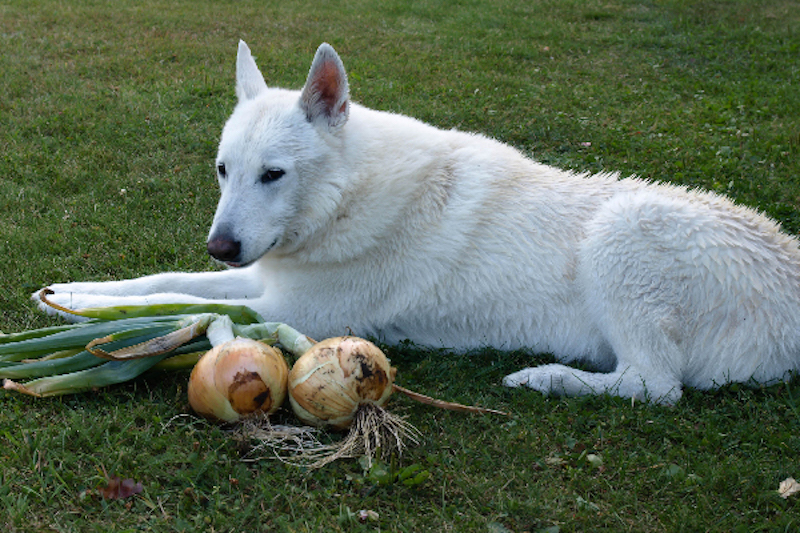Onions are delicious! They make our dishes taste amazing, and these little vegetables are inexpensive to buy. However, this beloved veggie has the potential to poison your dog. How much onion is toxic to dogs? The short answer is that it doesn’t take much onion to cause your dog serious complications from toxicity.
Why Are Vegetables Like Onions Toxic to Dogs?
Onions have a known toxin called N-propyl disulfide. This chemical leads to a breakdown of a dog’s cells – particularly their red blood cells. This in turn causes anemia. This oxidative damage is caused by the compound attaching to the oxygen molecules on the red blood cells. Therefore, the blood cells can’t do their job: carrying oxygen all over the body.
Meanwhile, your dog’s body now sees its own red blood cells as an invading body, like a virus, that needs to be eradicated. The cell is then destroyed through a process called hemolysis. The result? Hemolytic anemia.
How Hemolytic anemia occurs in dogs?
Hemolytic anemia occurs when a dog’s red blood cells are being killed before they can make more. This imbalance will be fatal if not treated.
All parts of the onion are poisonous to your dog. That means the flesh, skin, leaves, the juice that comes out of the onion is toxic. It also doesn’t matter if the onion is raw or cooked – both are equally damaging to your dog. Onion powder, which is very concentrated, is also extremely dangerous for your dog.
Then, there are related foods that could poison your dog. These are vegetables in the allium family, and it includes garlic, leeks, shallots, scallions (AKA green onions), and chives. Garlic actually contains more of the harmful N-propyl disulfide than onions!
Symptoms of Onion Poisoning in Dogs & How Much Onion is Toxic to Dogs
If your dog ingests a good amount of onions or related vegetables, it won’t take long for toxicity to set in. However, sometimes symptoms are delayed, appearing days after they are ingested. It is also possible for the toxicity to build up in your dog’s bloodstream over many days from eating just small amounts of onion and other allium vegetables.
Fatigue
Loss of Appetite
Elevated Heart Increased Respiratory Rate
Pale Gums
Diarrhea
Lack of Coordination (Ataxia)
Red or Dark Urine
Here are the symptoms of onion toxicity in dogs:
If you know your dog ingested onion and is exhibiting any of these symptoms, visit a vet immediately. If unattended, onion toxicity can lead to organ failure and death.
How is Onion Toxicity Diagnosed and Treated?
Your observations will be the most likely indicators of your dog’s onion poisoning. If you see your dog eat onion or other toxic foods, call your vet. Depending on your observations, what the vet can see, and lab tests, your vet can diagnose your dog. In lab reports, your vet will look for something called Heinz bodies. These are changes on the surface of your dog’s red blood cells.
If your dog just ate the onion, induced vomiting might help get the food out of their system. Your vet may then give your dog activated charcoal to clear their GI tract of the poison. However, if the toxin is already in the system, your vet may suggest supporting them as the toxin works its way through the body. This may lead to a lengthy hospital stay and involve blood transfusions for the anemia.
The main takeaway: the best way to treat positioning is through early intervention.
What Are Safe Vegetables to Feed Dogs?
Clearly vegetables in the allium family are no-no’s for dogs. But are there other vegetables your dog can safely eat? There sure are! And many are high in fiber and other nutrients that can help boost your dog’s immune system and fight obesity. Here are some dog safe veggies:
Broccoli
Brussels Sprouts
Carrot
Green Beans
Peas
Spinach
Stay safe, and remember to supervise your dog when they are eating or when there is tasty human food around!

